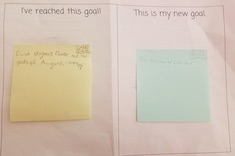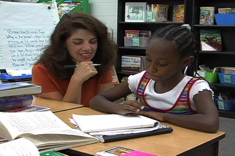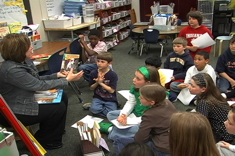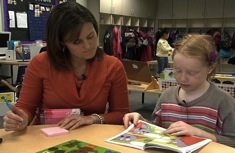At the start of the new year, Choice Literacy contributors reflect on their most important goals for January. This is the first installment in a two-part series.
Franki Sibberson is a fourth-grade teacher in Dublin, Ohio. You can keep up with Franki on the popular blog she writes with Mary Lee Hahn, A Year of Reading:
I am leading more nonfiction read alouds every day. I started this in December, and can already see how important conversations around longer nonfiction books are. I have always read nonfiction picture books to students, but am going to try to include more nonfiction read alouds that can be shared over several days. Since our regular read aloud time gives students time to make sense of literature, this time can support kids in talking through their understanding of nonfiction text. As always, students have notebooks ready to record their thinking. Building this in as a routine, rather than something I do when it fits into curriculum, will be my January goal. Since I want my kids to find authors and series they like, I'll try books from the Scientists in the Field Series, the Face to Face with Animals
series and Nic Bishop
books.
Ann Marie Corgill is a second-grade teacher in Birmingham, Alabama, and the author of the beautiful book Of Primary Importance:
A fifth-grade friend and I are launching cross grade-level "literary chats," focusing on a big question about reading/writing/literacy. This activity is something that will also strengthen our speaking and listening work, and build our communities of readers and writers. Meredith, the fifth-grade teacher, has done a couple of these chats with her students already, but our first group chat will be centered around the question, "What makes kids want to read?" The children are taking notes and jotting ideas preparing for the conversation, and we will videotape it so we can reflect together later.
Katherine Sokolowski is a fifth-grade teacher in Illinois, in the same small town where she grew up. Katherine regularly writes about teaching on her blog Read Write Reflect:
In January I will welcome my students back with a new unit in our reading class. After giving some thought to the different units I could open the new calendar year with, I chose nonfiction. We’ve covered nonfiction already this year, but I noticed my students tend to gravitate towards the fiction section of our classroom library. Ninety-five percent of their reading is fiction. When surveying my students as to why that is, I found that they believe nonfiction to be “boring” or “all facts.” So in reading class we will be diving into nonfiction reading, and also discussing some ways we can make sense of what we read with notetaking strategies. In writing class, we will be discovering what we would like to learn more about and researching about that topic. I hope when my students finish this unit they will see the beauty of nonfiction and choose to read it more on their own.
Cathy Mere is a first-grade teacher in Hilliard, Ohio. She is the author of More Than Guided Reading:
When I got the note that Choice Literacy was creating a round-up of changes for the new year, I excitedly marked my calendar. Then I started to think about what I would change. Usually I have a long list of changes, but I struggled to think of one. I couldn't believe it was so hard. Then it came to me — I was struggling because I haven't been spending the time I normally spend reflecting on my students and teaching. In the busyness of learning four new curriculum standards, collecting data, and working on committees I am not making time for what is most important: reflection. I need to carve out the time in my day — every day — to look at student work, reflect on my notes from the day, and determine what I need to adjust to support the learners in our classroom. In the new year, my goal is quite simply to make time to reflect on the learning in our community. It's time to get the teaching and learning occurring in my classroom back in balance.








